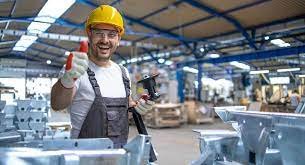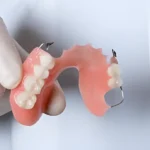People think that the only option for disposing of an old or broken item is to dump it away. Stop! Make sure you don’t make the same mistake! The electric motor inside can be recycled and sold for a good price. Before reaching the end scrap electric motor converts electrical energy into mechanical energy. Through the interaction of its windings and magnetic field, these scrap electric motors generate mechanical energy (force). Due to their extensive use in industrial and commercial purposes, electric motors must be recycled.
What are the components of Electric Motors?
The following materials are commonly found in electric motors and they are recyclable and valuable:
Cast iron and steel
- Shaft
- Stator and rotor
- House
- Flanges and bearings
Aluminum
- Part of the rotor
- House and flanges
Copper
- Windings
Plastic
- Insulation
- Fan
Recycling Process:
Electric motors are mostly recycled on a large scale. As a result, some electric motors have an insufficient number of copper windings. Electric motor recycling should be a steady process:
- To begin, the recyclers gather as many electric motors as possible in order to enhance their chances of receiving enough copper.
- The metallic shell of the motor is smashed using a hammer or hammering mill.
- Then according to material components must be separated and grouped.
- Finally, they recycle the separated components at their various recycling hubs.
Benefits of Scrap Recycling Electric Motors?
Material recycling is more eco-friendly and saves both natural resources and energy. It helps the environment by reducing landfill waste, solid waste, and pollution. The following are the benefits of Recycling Scrap Electric Motors. You can also try electric motor repair Melbourne.
Reuses valuable materials:
The more copper in an electric motor, the more valuable it is to a recycler. Aluminum is the next most valued nonferrous metal found in electric motors. Steel can thus be recycled, although it does not have the same value as copper or aluminum. Since the presence of wood and plastic on electric motors is considered a pollutant, they don’t have much value.
Reduces landfill pollution:
Recycling-based manufacturing preserves the world’s limited natural resources by employing recycled materials instead of trees, metal ores, minerals, oil, and other raw materials extracted from the earth. The pressure to increase forest cutting and mining operations is reduced as a result of this conservation.
Reduces solid waste:
Recycling electric motor consumes very little metals, energy, or other resources, and is unlikely to pollute the environment. In addition to these advantages, reuse prevents environmental damage that would occur if the item was discarded rather than reused. Manufacturing a product from raw materials requires resources, pollutes the environment, and produces waste.
Protects natural resources:
Recycling electric motors eliminate the need for new metal production. As a result, valuable natural resources like coal and iron eare are preserved because they are required in metal manufacturing. Coal burning is a major contributor to global warming, thus it’s critical to think about it. Recycling metals is an environmental activity and a simple method of corporate responsibility because it requires less energy and reduces the use of natural resources.
Reduces overall pollution:
Companies are increasingly focusing on recycling all raw materials in order to meet aggressive “zero to landfill” goals. Recycling metals is a better option for the environment than other methods of disposal because it minimizes emissions and pollution. Above all, the recycling process will assist to reduce pollution in the environment and inspire others to reap the benefits from it.







